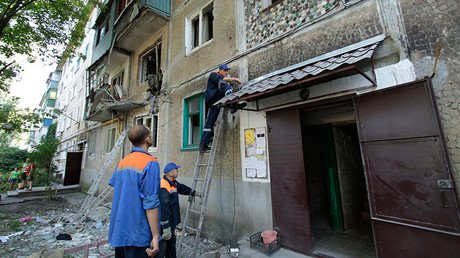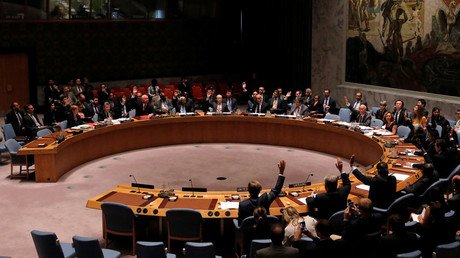Drone footage catches Donbass destruction as civilian casualties continue to rise (VIDEO)
Two years on from the outbreak of the conflict in eastern Ukraine, dozens of civilians, including children, continue to suffer injuries and die in Donbass. This July, the civilian death toll in eastern Ukraine hit a record high for a single month since the same time last year, international monitors say.
While many believe hostilities in eastern Ukraine are over and a ceasefire between rebels and government forces is more or less respected – which is to a certain extent true – casualties among civilians continue to rise across Donbass.
In late July, the UN Office for the Coordination of Humanitarian Affairs (OCHA) said in its latest report that 73 conflict-related civilian casualties, including eight fatalities and 65 injuries, took place in just July, while, in June, 12 people were killed and 57 more injured.
This is the highest number of casualties among Donbass residents in a single month since August 2015, the OCHA said.
“The average monthly civilian casualties recorded in June and July were twice as high as in September 2015 to May 2016, when 34 casualties on average were recorded.”
People there are being killed mostly by shelling, whether indiscriminate or not, while landmines and “explosive remnants of war” also take their toll, even “during periods of relative calm.”
“Recently, we resumed hospitalizing civilians … with shrapnel wounds,” Vadim Onoprienko, the deputy head of the Donetsk trauma center, told Russian television, listing multiple towns around the rebel-held city where people had been injured after artillery or mortar shelling.
“As you can see, this is the way the Minsk agreements are being implemented,” he noted.
As the troubled region tries to carry on despite economic downfall, food and sanitation shortages, the UN children agency, UNICEF, says that, last year, more than 20 children were killed and over 40 were injured.
According to the latest figures as of July, 580,000 children have been affected by ongoing hostilities in the region and 228,049 children have been internally displaced.
Despite the ceasefire still being in place, rebel forces say the government’s military has intensified shelling and sniper fire throughout the summer, and deployed more heavy weaponry to the contact line between the belligerent parties.
“The shells fall on our village almost every night but last night was worst of all. It was horrible. It is very hard to live through all this shelling,” a local resident in a village located close to the contact line told ANNA News.
The OSCE monitoring group in Ukraine also reports outbreaks of violence near the contact line that impacts civilians living in the area.
“The OSCE special monitoring group indeed continues to register violations of the Minsk Agreements, which in fact always have direct and indirect impact on civilians on both sides of the contact line,” Alexander Hug, the Principal Deputy Chief Monitor of the OSCE Special Monitoring Mission to Ukraine, told RT.
“The warring parties are in many places far too close to each other,” Hug said, adding that “the sides need to be separated from each other to a distance, at which engagement is no longer that easy.”














